DPW Design Zero 2 Handleiding
DPW Design
Niet gecategoriseerd
Zero 2
Bekijk gratis de handleiding van DPW Design Zero 2 (4 pagina’s), behorend tot de categorie Niet gecategoriseerd. Deze gids werd als nuttig beoordeeld door 52 mensen en kreeg gemiddeld 4.8 sterren uit 26.5 reviews. Heb je een vraag over DPW Design Zero 2 of wil je andere gebruikers van dit product iets vragen? Stel een vraag
Pagina 1/4

Z Z Zero 2 -2, Dual ero Difference
Thanks for purchasing a Z-2. We hope it becomes an essential part of your modular synthesizer.
The Z-2 is a two channel zero difference trigger that can be CV controlled.
It is the same evaluating click-less switching control circuit used in our D-2, 4-Band Distortion module but
with all the ins and outs accessible to make it as useful as possible in the context of a modular synthesizer.
The Z-2 was mainly designed for audiorate wave-splicing together with a Switch but it can also be used to
detect zero crossings of signals, to detect zero difference between two signals, to perform click free
switching, to add jitter to signals, to synchronize signals and many other things. It is mainly designed to be
used in combination with other modules such as the Switch module but can also be used on its own.
As the technical nature of this module can get a little abstract we thought we should start with some clear
examples of its use.
There is a more detailed description further on in the manual for those that are interested.
Controls
A
A is one of the inputs to a comparator (B is the other). A is compared to B. If the voltage on A is
higher than B then Out will go high if D is high or Out will go low if D is low. D is controlling what Out
will be after A has become higher than B.
A is normalled to 0V if nothing is connected.
B
B is the other input to the comparator.
B is normalled to 0V if nothing is connected.
D
D is controlling what Out will be after A has become higher than B (a zero event).
D is a logic input but works with audio too. A signal 1V or more is seen as a logical high signal.
If nothing is connected to D the output is just controlled by A and B and will toggle from high to low or
low to high every time it gets triggered by the comparator (free running mode).
Out
Out is a logic output where high is +5V and low is 0V.
It is meant as a logic control signal but can of cause be used as audio.
The LED next to the Out shows the status of the output signal.
In short you can compare two signals on A and B and when they are equal Out will toggle.
Or you can compare signals on A and B but Out will only switch to what you tell it to switch to by the
signal in on D.
This sounds simple but can give you access to functions that are hard to achieve in other ways.
Device specs
Module size: 2 hp wide, 29 mm deep with power connector.
Input impedance: 100 kohm
Out impedance: 1 kohm
Power requirements: +12V. Max power consumption 10 mA
-12V. Max power consumption 3 mA
Connect the power cable with the red stripe towards the marking -12V on the board.
The unit is protected for reverse power.
DPW Design, Häradsvägen 200, 14171 Segeltorp, Sweden
www.dpw.se MAN-Z-2 Rev B

Use case examples
A few examples, just to get your imagination going.
Jitter generation (swing)
Jitter is when the rising and falling edges of a signal vary around the time where they are expected to be.
This is what is called swing in sequencers. With the Z-2 you can add that to any signal.
A simple example is for drums.
Connect as the picture and you can set the amount of jitter with the VCO
or LFO. High frequency low jitter. If you lower the frequence a lot, the jitter
will be so extreme so it starts skipping gate signals and you have a
random variation in your gate rhythm.
An other example can be to connect it on the sync signal between two
VCOs instead of the gate signal.
This will give you a very dirty sound out from the two jitter synced VCOs.
Or simply one VCO in to D and another VCO to A. Then use the Out signal
as your sound source. Can end up as a very aggressive square sound.
Synchronizing
This is like the previous jitter example but syncing signals instead of making them unsynced.
Again the drum example from before but LFO and Gate in has swapped
places. This will also generate a varied drum pattern with the frequency of
the LFO controlling how many gate signals that will be let through to Out.
The difference from the previous example is that the gate out signals will be
in perfect sync with the gate in on A.
The reason there is a 1V signal in to B is that B is normalled to 0V and a gate
signal from a sequencer (or other logic signal) will not completely go down to
0V. It can actually be 0,1V and then the gate signal will never pass the
detection threshold on B. So you need to feed the circuit with a voltage
between 1V to 4V.
Wavesplicing, clickless switching
A way to switch audio or CV sources without any glitches in combination with the SW-1 Switch module.
Start with D disconnected. Free running mode.
A and B listens to the two VCOs you are going to switch between.
When the Z-2 detects that A and B are on the exact same voltage
Out will toggle and a switch is made from one VCO to the other.
This way you get no click in the switching and a seamless wave-
splicing.
If you connect a gate signal to D you can control the switching with
it. When the gate signal goes high the Z-2 will wait till the two
VCOs are at the same voltage and a switch will be made.
Try and connect an unsynced VCO to D for controlling when it shall switch. Could give an almost broken but
not harsh sound, or all sorts of interesting sounds.
DPW Design, Häradsvägen 200, 14171 Segeltorp, Sweden
www.dpw.se MAN-Z-2 Rev B

Switched rectification
Using the zero crossing detection to switch in only one half period of a simple signal, like a sine wave. This
means you can do half or full wave rectification and anything in between!
Connect a sine wave from the VCO as shown. Set the attenuverter
to full on. You will have exactly the same sine wave out in this start
position.
The Z-2 is now detecting zero crossings and controlling the switch
so the positive part of the wave comes through one side of the
switch and the negative comes through the other side.
If you start turning the attenuverter only one half period of the wave
will be affected.
Turning the attenuverter to zero will give you a perfect half wave
rectified signal.
If you turn the attenuverter over to the negative side you will start
getting a wave that looks almost full wave rectified.
Finally a perfect full wave rectification with the attenuverter turned
max to the negative side.
At this point you may think that something is wrong with your
connections because your wave may be turned upside down!
The reason the wave may be upside down is that with nothing connected to D the Z-2 is in free running
mode and just toggles the state of Out everytime it detects a zero event. You have no control over if it started
high or low the first time.
This is normally not a problem for audio as a wave sounds the same if it's upside down.
You can control this by connecting the squarewave from the
same VCO to D. Now the switch will always turn on at a zero
event when the square wave is high and it will turn off at a zero
event when the square wave is low.
In the picture you can see the added squarewave.
As you can the rectified wave ended up being upside down.
You can turn it the other way by simply swapping the two patch cords connected to G and R on the Switch.
If you would do something like this with a harmonically rich sound like a complex wavetable it can be good to
have a simple wave connected to D to help the Z-2 know how often it is allowed to react to the signals on A
and B.
In general, if the result on Out gets too chaotic. Connect something to D that restricts it in some way.
DPW Design, Häradsvägen 200, 14171 Segeltorp, Sweden
www.dpw.se MAN-Z-2 Rev B
Product specificaties
| Merk: | DPW Design |
| Categorie: | Niet gecategoriseerd |
| Model: | Zero 2 |
Heb je hulp nodig?
Als je hulp nodig hebt met DPW Design Zero 2 stel dan hieronder een vraag en andere gebruikers zullen je antwoorden
Handleiding Niet gecategoriseerd DPW Design

15 Augustus 2023

15 Augustus 2023

15 Augustus 2023

15 Augustus 2023

15 Augustus 2023

15 Augustus 2023

15 Augustus 2023

15 Augustus 2023
Handleiding Niet gecategoriseerd
- Texican
- DB Technologies
- Q-CONNECT
- Loctite
- Creda
- Klarfit
- EBS
- BOHLT
- Logicom
- N8WERK
- Phonak
- Bendix King
- Kimo
- Duravit
- Omron
Nieuwste handleidingen voor Niet gecategoriseerd

18 September 2025

18 September 2025
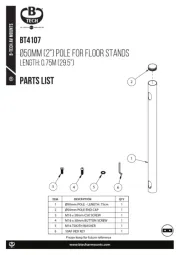
18 September 2025
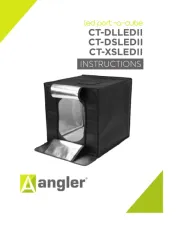
18 September 2025
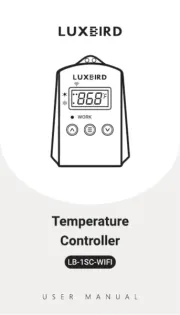
18 September 2025
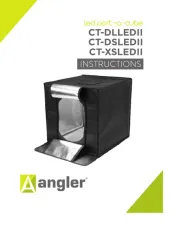
18 September 2025

18 September 2025

18 September 2025

18 September 2025
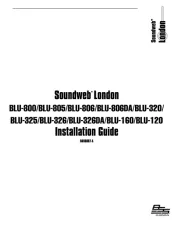
18 September 2025